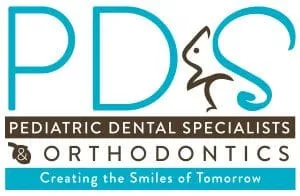Frequently asked questions: dental fillings Are dental amalgams safe? Is it possible to have an allergic reaction to amalgam? Is it true that dental amalgams have been banned in other countries? Is there a filling material that matches tooth color? If my tooth doesn't hurt and my filling is still in
Read more-
Fillings
-
Fillings
There are three basic kinds of fillings used to restore teeth after decay is removed: amalgams, composites and stainless steel crowns. Amalgams Most dental amalgams are silver in color and are made from a mixture of mercury and an alloy of silver, tin, and copper. Mercury makes up about 45-50 percent
Read more -
Flap Surgery
Your bone and gum tissue should fit snugly around your teeth like a turtleneck. When you have periodontal disease, this supporting tissue and bone is destroyed, forming "pockets" around the teeth. Over time, these pockets become deeper, providing a larger space for bacteria to thrive and wreak havoc. As
Read more -
Flap Surgery
Your bone and gum tissue should fit snugly around your teeth like a turtleneck. When you have periodontal disease, this supporting tissue and bone is destroyed, forming "pockets" around the teeth. Over time, these pockets become deeper, providing a larger space for bacteria to thrive and wreak havoc. As
Read more -
Flossing
What is flossing? Flossing is a method for removing bacteria and other debris that cannot be reached by a toothbrush. It generally entails a very thin piece of synthetic cord you insert and move up and down between the sides of two adjoining teeth. Why is flossing important? Many dentists believe
Read more -
Flossing
Flossing is a method for removing bacteria and other debris that cannot be reached by a toothbrush. It generally entails a very thin piece of synthetic cord inserted and moved up and down between the sides of two adjoining teeth. Floss removes plaque and debris that stick to teeth and gums. It also increases
Read more -
Flossing
What is flossing? Flossing is a method for removing bacteria and other debris that cannot be reached by a toothbrush. It generally entails a very thin piece of synthetic cord you insert and move up and down between the sides of two adjoining teeth. Why is flossing important? Many dentists believe
Read more -
Fluoride
For decades, fluoride has been held in high regard by the dental community as an important mineral that strengthens tooth enamel, which thereby helps to prevent decay of tooth structures. Water fluoridation is endorsed by nearly every major health and safety-related organization in the world. Communities
Read more -
Fluoride
For decades, fluoride has been held in high regard by the dental community as an important mineral that strengthens tooth enamel, which thereby helps to prevent decay of tooth structures. Water fluoridation is endorsed by nearly every major health and safety-related organization in the world. Communities
Read more -
Fluoride Facts
For decades, fluoride has been held in high regard by the dental community as an important mineral that is absorbed into and strengthens tooth enamel, thereby helping to prevent decay of tooth structures. In nearly every U.S. community, public drinking supplies are supplemented with sodium fluoride
Read more -
Fluoride Facts
For decades, fluoride has been held in high regard by the dental community as an important mineral that is absorbed into and strengthens tooth enamel, thereby helping to prevent decay of tooth structures. In nearly every U.S. community, public drinking supplies are supplemented with sodium fluoride
Read more -
Fluorosis
Fluorosis is a condition in which your body has been exposed to too much fluoride. In normal doses (typically found in a safe drinking water system and an ADA-approved toothpaste), fluoride is a healthy compound that promotes strong teeth, which has the ability to fight cavities and other problems. But
Read more -
Fluorosis
Fluorosis is a condition in which your body has been exposed to too much fluoride. In normal doses (typically found in a safe drinking water system and an ADA-approved toothpaste), fluoride is a healthy compound that promotes strong teeth, which has the ability to fight cavities and other problems. But
Read more -
General Dentistry
The first line of defense against oral health problems In general dentistry, the dentist is the primary care provider for patients of all ages and is responsible for the prevention, diagnosis and treatment of a wide variety of conditions, disorders and diseases affecting the teeth, gums and maxillofacial
Read more -
Gingivitis/Gum Disease
Periodontal disease is a condition in which the structures that support the teeth, including the gums and bone surrounding each tooth, become infected and begin to break down. Periodontal disease (also known as "periodontitis") can be influenced by the body's response to infection caused by the bacteria
Read more -
Glossary
A B C D E F G H I J K L M N O P Q R S T U V W X Y Z A Amalgam - Material made from mercury and other alloy mixtures used to restore a drilled portion of a tooth. Anesthesia - Medications used to relieve pain. Anterior teeth - Front teeth. Also called incisors and cuspids. Arch - The upper or lower
Read more
Office Hours
9:00 am - 6:00 pm
9:00 am - 6:00 pm
8:00 am - 5:00 pm
7:00 am - 4:00 pm
7:00 am - 4:00 pm
Closed
Closed
Our Location
Find us on the map
4542 Spring Stuebner Rd
Spring, TX 77389, US
